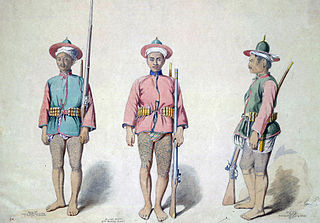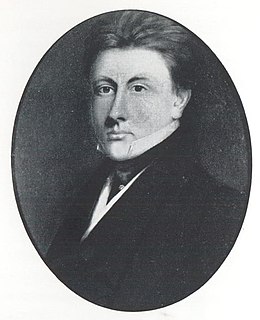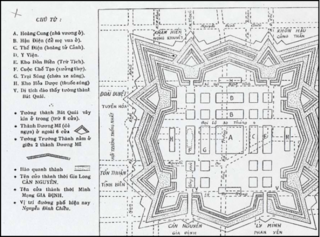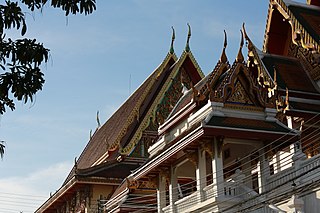 W
WThe Rattanakosin Kingdom is the fourth and present kingdom in the history of Thailand. It was founded in 1782 with the establishment of Rattanakosin as the capital city. This article covers the period until the Siamese revolution of 1932.
 W
WThe Burmese–Siamese War of 1849–1855 was a war between the Burmese Konbaung Dynasty and the Siamese Rattanakosin Kingdom, the last of twenty wars fought between the Burmese and the Siamese between the 16th and 19th centuries. The war was the result of attempts by the Siamese to recapture much of the land they had lost to the Burmese in previous wars, as well as make reality their claims in the trans-Salween region of Myanmar that had been contested for hundreds of years. After heavy fighting, the Burmese drove the Siamese out of Shan territory, ending realistic Siamese hopes of reclaiming the territory.
 W
WThe Chakri dynasty is the current ruling royal house of the Kingdom of Thailand, the head of the house being the monarch, and hence the head of state. The dynasty has ruled Thailand since the founding of the Rattanakosin Era and the city of Bangkok in 1782 following the end of Taksin Thonburi's reign, when the capital of Siam shifted to Bangkok. The royal house was founded by Rama I, an Ayutthaya military leader of Sino-Mon descent.
 W
WThe Principality of Hà Tiên or Hà Tiên Protectorate, was a de facto independent principality in the mouth of Mekong Delta, later a vassal principality of the Siamese Rattanakosin Kingdom and Vietnamese Nguyễn dynasty in the 18th and 19th century before being annexed by Vietnam in 1832.
 W
WRobert Hunter was a British merchant and unofficial diplomat in Siam during the reign of King Rama III. Hunter settled in Bangkok in 1824 and served as an intermediary between Westerners and the court until his departure from the country in 1844 over a trade dispute with the king.
 W
WThe Kingdom of Luang Phrabang was formed in 1707 as a result of the split of the Kingdom of Lan Xang. When The kingdom split, Muang Phuan became a tributary state of Luang Prabang. Then as the years passed, the monarchy weakened even more, that it was forced to become a vassal various times to the Burmese and the Siamese monarchies.
 W
WKingdom of Vientiane was formed in 1707 as a result of the split of the Kingdom of Lan Xang. The kingdom was a Burmese vassal from 1765 to 1778. It then became a Siamese vassal until 1828 when it was annexed by Siam.
 W
WThe Lê Văn Khôi revolt was an important revolt in 19th-century Vietnam, in which southern Vietnamese, Vietnamese Catholics, French Catholic missionaries and Chinese settlers under the leadership of Lê Văn Khôi opposed the Imperial rule of Emperor Minh Mạng.
 W
WParamanuchitchinorot was a Buddhist writer and a prince of the Chakri dynasty. One of his well-known epic poems is Lilit Taleng Phai. In 1851 he was appointed the Supreme Patriarch of the Rattanakosin kingdom and remained in that position until his death.
 W
WThe Siamese invasion of Kedah was a military operation mounted by the Kingdom of Siam and its ally the British against the Sultanate of Kedah in November 1821, in the area of what is now northern Peninsula Malaysia.
 W
WWat Bueng Thonglang is a Buddhist temple in Bang Kapi District, Bangkok, Thailand. It was measured under Theravada School, Section of Maha Nikai. It is located at Lat Phrao 101 Road. The temple was founded in King Rama V period by Longpoo Puk who was ordained in Wat Suthatthepvararam, and was a student of Sangaraja Phea.
 W
WWat Prayurawongsawat Worawihan, known in short as Wat Prayun is a 19th century Buddhist temple complex, located near the Memorial Bridge in Bangkok, Thailand.
 W
WWat Yannawa is an old Buddhist temple (wat) dating back to the Ayutthaya period, located in the Sathon district of Bangkok on Charoen Krung Road, Bangkok, Thailand. It has a unique junk shaped chedi and viharn built by King Rama III. The idea behind the construction was that Chinese junk was quickly disappearing and the pagoda should show present descendants what it looked like. The temple was originally known as Wat Khok Khwai during Ayutthaya era and Wat Khok Krabue (วัดคอกกระบือ) during Thonburi and early Bangkok era before the construction of the chedi.